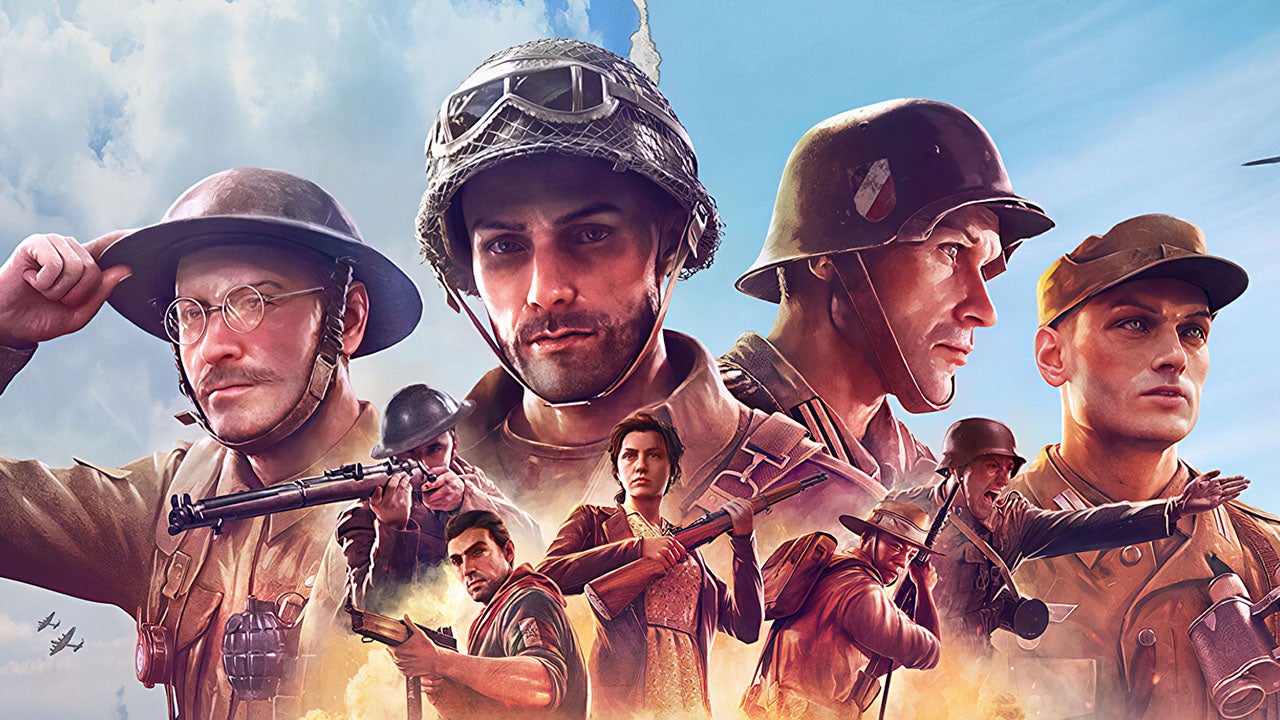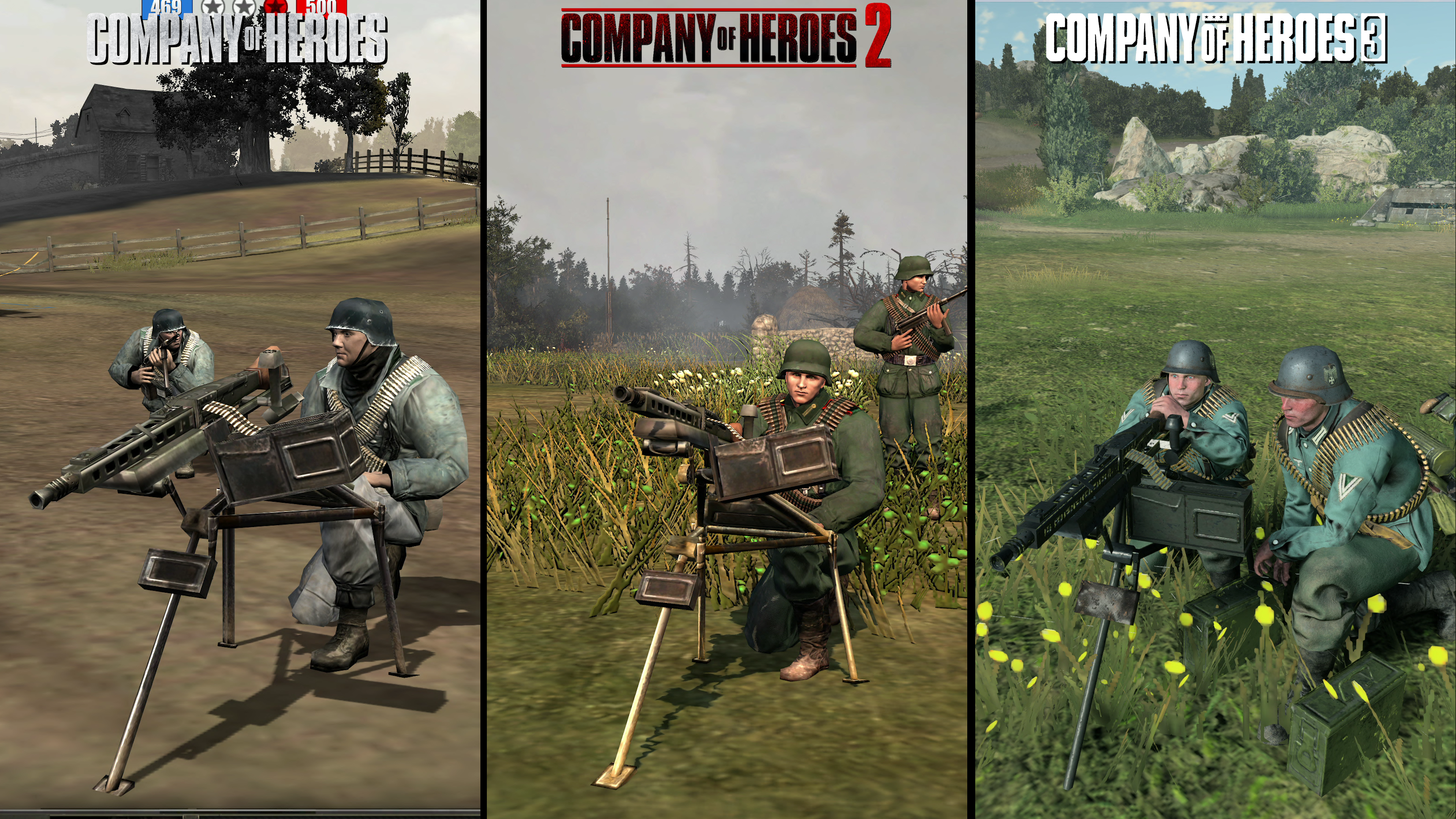
If I had to sum up Company of Heroes 3 in one sentence, I’d say it’s an excellent real-time strategy game that’s technically sound – but also not ambitious. I enjoy the game but I don’t feel it pushes the boundaries the way its predecessors did. So on the one hand it feels like a bit of a missed opportunity but the other side is that it’s very easy to run on very high settings across a range of devices.
I was really keen to cover this because it’s an RTS with a completely different spin, putting you in command of an allied force or an Axis from a top-down perspective. The goal of the game is not just to outsmart the enemy while micromanaging your base and resource collection. The goal is to capture and hold territory, which then provides you with the resources to equip and expand your small force. There are no huge armies here, just a group of troops, in which the infantry is moved and captured as a squad. There’s no Starcraft-style building queue and you don’t take out units by the hundreds to send them to their deaths like Command and Conquer.
Company of Heroes aims to keep each unit alive as long as possible, stick to cover, make use of special abilities and gain more experience that translates into new advantages on the battlefield. New troops are not as effective as experienced veterans, so a winning commander usually has good micromanagement and positioning skills. In short, this is a different form of RTS with a smaller and more tactical nature. That’s what made 2006’s Company of Heroes so compelling, and in revisiting the original and its 2013 sequel, I’m beginning to realize just how technologically unambitious the new game was by comparison.
Let’s be clear – the game is still great and has a lot going for it. Geometric detail is at a premium, so much so that zooming in on a fruit cart on the battlefield shows each fruit individually. Likewise, Company of Heroes 3 sees a unifying push to make all the textures and materials textured in a physical way: tank metals look really cool and look very different from the surrounding stones or dirt in terms of material quality. Textures are also generally composed with greater precision than ever before and, more importantly, without a lot of pre-drawn detail in the spread texture, so it doesn’t look overly noisy. Details are now driven by material properties, like a modern toy.
The animations are also of high quality – zoom in on some of the infantrymen in combat and you can see them working their weapon movement, showing obvious recoil when firing – and there’s even a custom animation for each unit of when reloading occurs while the magazines are off. When combined with the granular destruction the series is known for, where buildings explode and where every piece of cover you see can be destroyed or flattened by a vehicle, then yeah, Company of Heroes 3 looks pretty sweet. However, there is a lot that could benefit from further improvement.
One of the best examples can be found with the game Shadows: the game uses shadow maps and transitions between different quality levels are contrasted at close range. Older Company of Heroes did better – even the first game from 2006. The new sequel is more detailed, but with its weird shadows, feels oddly sterile by comparison. The new details of the geometry and textures are not very noticeable because they are not shaded properly.
| 60 Hz optimized settings | 120 Hz optimized VRR settings | |
|---|---|---|
| picture quality | Maximum | high |
| Physics quality | high | high |
| Shadow quality | high | mode |
| Quality texture | super | super |
| engineering quality | Maximum | Maximum |
| Anti-aliasing | high | a little |
| Accuracy scale | 100% | 83% (if required) |
Another indicator of a more conservative approach to innovation is the new use of the latest technology. The original Company of Heroes was one of the first DX10 games, using the new API to improve shadow and lighting quality while punishing GPUs when launching at the highest settings. Heroes 2 was notorious in 2013 for its DX11-powered graphics being similarly heavy when set to its highest setting. That kind of graphical freshness is missing in Company of Heroes 3. Even though the new game has moved to a new DX12 version of the “Essence Engine,” there’s no real indication that the new API is being pushed hard in any obvious way. For example, ray tracing is nowhere to be found, and something like ray tracing shadows would have been a cheap and computationally amazing way to solve visual problems with shadows in this game.
In fact, Company of Heroes 3 is really light on the GPU. When running the game on my Core i9 12900K system paired with an RTX 4090, the experience maxed out at 200fps at 4K. This is great for those who like high frame rates, but for extreme settings it’s a disappointment. Unlike its predecessors, there is nothing new here to push the latest PC hardware and I think this translates into untapped potential to make the game look even better.
Enhanced settings? There is an argument that you don’t really need it because the options focus mostly on graphical effects when the primary bottleneck is mostly on the CPU side. You could easily be CPU bound in Company of Heroes 3, even at 4K. When you look at the CPU usage, the game uses a lot of cores and threads with all the other AI players, but you can still see that there is a threaded load limit. It’s not behavior I’d really like to see in an era when CPUs are getting wider at a faster pace than single-threaded performance.

.png/BROK/resize/690%3E/format/jpg/quality/75/ForRich-(1).png)
However, it is still possible to get high performance levels from the normal set, which is fine, otherwise you could aim for high frame rates instead, to get the best out of a high refresh rate monitor. On this page, you’ll see my suggestions for different frame rate targets, using the mainstream Ryzen 5 3600 paired with an RTX 2060 Super siming for 1440p output. Frame rate not high enough to sit comfortably within a VRR window of a high refresh rate monitor? A quick decrease in the resolution scale helps tremendously.
In short, Company of Heroes 3 is great fun and polished in many ways, but also “safe” from a technical perspective. It’s also relatively light on #StutterStruggle shader compilation, with a few hitches in the first 30 seconds of the tutorial task, with the rest of the game playing as smoothly as possible.
The game runs fine even at maximum settings, but there is still a feeling that the developer should have pushed on the GPU side: RT shadows and ambient occlusion could have made a huge difference to the presentation. In short, I wasn’t disappointed with the game – and I’m sure the light GPU requirements will ensure more players have a smooth experience – but where previous series entries pushed new boundaries within the genre, Company of Heroes 3 does not.

“Certified food guru. Internet maven. Bacon junkie. Tv enthusiast. Avid writer. Gamer. Beeraholic.”





More Stories
Nintendo is launching a music app with themes from Mario and Zelda, and more importantly, a Wii Shop channel
The Google Pixel Tablet 3 will take another step towards replacing your laptop
Apple still excels at building the best computers